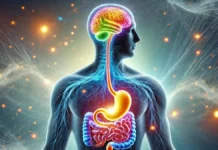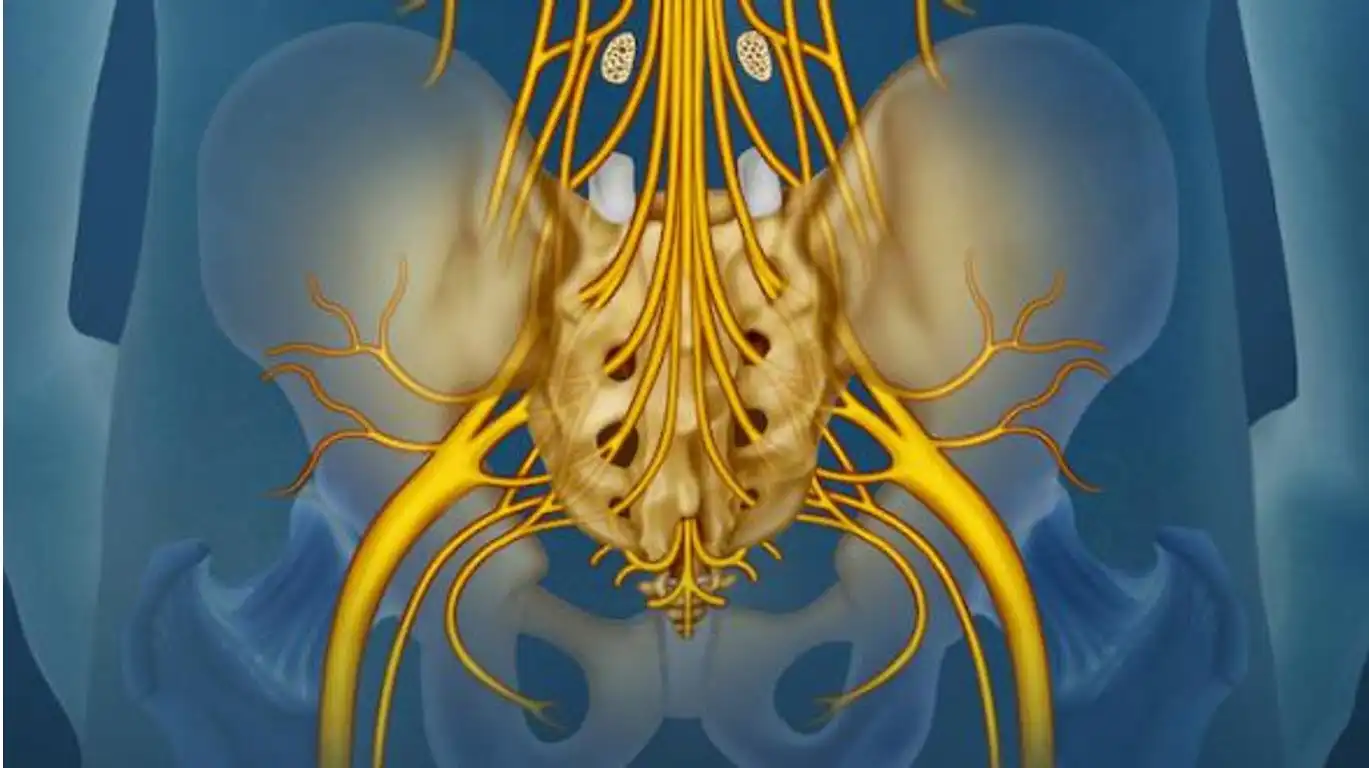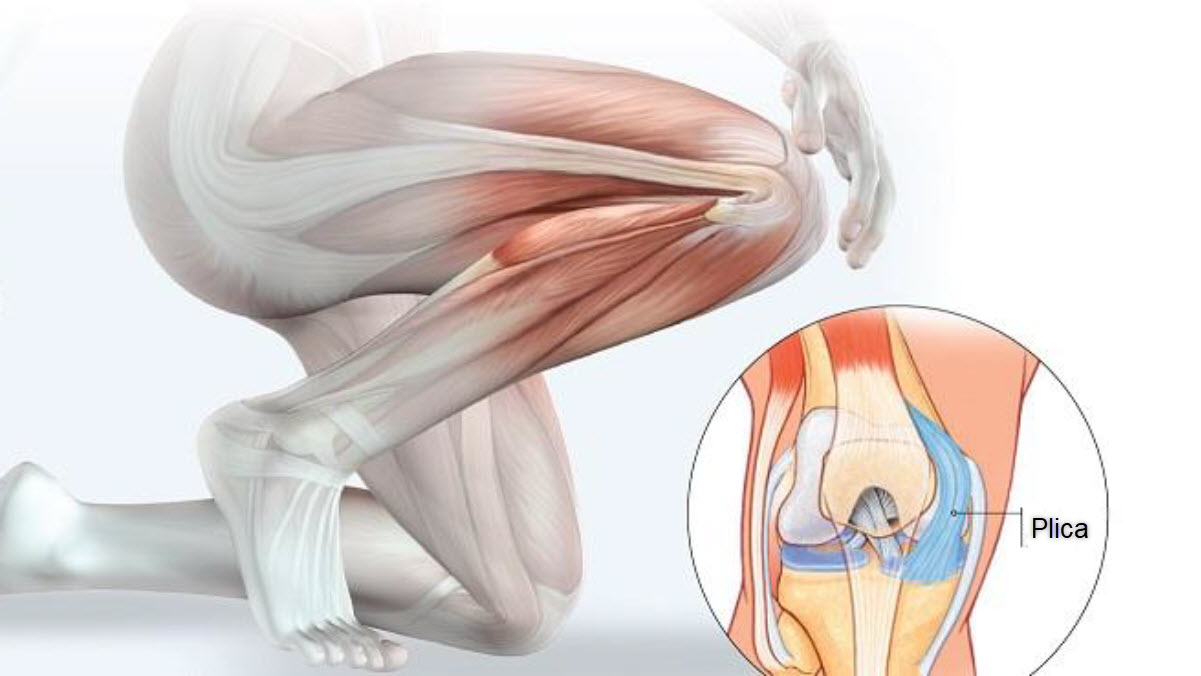Introduction
In the intricate web of human health, the connection between our emotions and physical body is undeniable. Daily stresses, unprocessed emotions, and trauma often manifest not only in our minds but also within our bodies, forming what some call “emotional knots.” These knots are physical manifestations of unresolved tension, deeply entwined in our muscular and fascial systems. The interplay between the emotional and physical realms underscores the importance of understanding how our bodies process and store experiences.
One of the most profound yet underappreciated aspects of emotional and physical well-being is the role of breathing. Beyond its obvious function of oxygenating the body, breathing serves as a bridge between the conscious and subconscious, providing a natural mechanism for releasing tension and promoting healing. When harnessed effectively, breathing can unlock emotional blockages, calm the nervous system, and foster a sense of inner peace.
Central to this mind-body connection is the psoas muscle, often referred to as the “muscle of the soul.” The psoas is deeply embedded in the core of the body, linking the upper and lower halves. It is instrumental in maintaining posture, facilitating movement, and even influencing our sense of safety and stability. However, its role extends beyond biomechanics; the psoas is a key player in emotional health, as it is highly sensitive to stress and trauma. Tightness in this muscle can indicate unresolved emotional distress, and releasing it can lead to profound emotional and physical relief.
By exploring the nature of emotional knots, the role of breathing in emotional healing, and the importance of the psoas muscle, we gain valuable insights into the mind-body connection. Understanding these concepts empowers us to address both emotional and physical discomfort, fostering a more holistic approach to health and well-being.
Understanding the Psoas Muscle
The psoas muscle, a deep-seated muscle located in the core of the body, plays a pivotal role in maintaining posture, movement, and emotional well-being. Often referred to as the “muscle of the soul,” the psoas is a unique structure that connects the upper and lower body while influencing both physical and emotional states. To fully appreciate its significance, it’s essential to delve into its anatomy, its connection to emotions, and why it is so profoundly linked to our inner well-being.
Anatomy and Function of the Psoas
The psoas major, part of the iliopsoas muscle group, originates in the lumbar spine, specifically from the transverse processes and vertebral bodies of T12 to L5. It travels through the pelvis and inserts at the lesser trochanter of the femur. The iliacus muscle, which combines with the psoas to form the iliopsoas, contributes to its powerful role as a hip flexor.
Functionally, the psoas is indispensable for several movements and postural alignments:
- Hip Flexion: It allows the thigh to move toward the torso, a crucial action for walking, running, and climbing.
- Spinal Stability: By attaching to the lumbar spine, the psoas provides support and stability to the lower back and pelvis.
- Core Integration: The psoas integrates the upper and lower body, acting as a stabilizer during dynamic activities.
- Pelvic Alignment: It helps maintain the natural curvature of the spine, ensuring efficient posture and movement patterns.
Despite its critical biomechanical roles, the psoas often suffers from neglect or chronic tension due to sedentary lifestyles, poor posture, and prolonged sitting, which can lead to stiffness, discomfort, or even pain.
Connection Between the Psoas and Emotions
Beyond its physical functions, the psoas has a profound connection to the autonomic nervous system. It plays a central role in the body’s fight-or-flight response, making it a key player in how the body processes and stores emotions. When the body experiences stress, fear, or anxiety, the psoas instinctively contracts, preparing the body to flee or defend itself. Over time, chronic stress can lead to prolonged contraction of the psoas, trapping emotional energy and creating a sense of tension or unease.
For this reason, the psoas is often seen as a “storehouse of emotions.” Negative emotions, particularly those linked to fear and trauma, can manifest as tightness or discomfort in the psoas. This physical-emotional connection explains why many people feel a release of emotions, such as crying or a sense of relief, when engaging in psoas-focused stretching or breathing exercises.
Why the Psoas Is Called the “Muscle of the Soul”
The psoas’ nickname, the “muscle of the soul,” is rooted in its deep connection to both the physical body and emotional well-being. In various traditions, the area surrounding the psoas is considered the body’s energetic core, housing the lower chakras, which govern grounding, creativity, and personal power. A balanced psoas fosters a sense of stability and connection to the present moment, enabling individuals to face challenges with resilience.
The psoas’ unique positioning also reflects its symbolic role. By connecting the spine to the legs, it serves as a literal and metaphorical bridge between the higher functions of the mind and the grounded physicality of the lower body. This duality underscores the idea that the psoas is a gateway to deeper self-awareness and emotional release.
When the psoas is healthy and supple, it enables the body to move with fluidity, the mind to remain calm, and the emotions to flow freely. Conversely, a tight or imbalanced psoas can contribute to physical pain, postural issues, and emotional stagnation.
The Science of Breathing
Breathing is one of the most fundamental yet often overlooked processes of the human body. Beyond its basic function of delivering oxygen to our cells and expelling carbon dioxide, breathing plays a pivotal role in regulating our emotional state, promoting physical health, and maintaining energy flow. Its dual role as both an involuntary and voluntary action gives us the unique ability to influence our mental and physical well-being through conscious breath control.
How Breathing Impacts Emotional State
Our breathing patterns are intricately linked to our emotional state. For example, stress, anxiety, or fear often cause rapid, shallow breathing, signaling the body to prepare for a fight-or-flight response. Conversely, calm and steady breathing communicates safety and relaxation to the brain, activating the parasympathetic nervous system. This system counters the stress response, promoting feelings of peace and balance.
Scientific research has shown that slow, deep breathing can significantly reduce cortisol levels, a hormone associated with stress. When we consciously regulate our breath, we also influence the vagus nerve, a key component of the autonomic nervous system that governs our emotional and physiological states. A strong vagal tone, achieved through practices like diaphragmatic breathing, improves resilience to stress, enhances emotional regulation, and fosters a sense of overall well-being.
The Physiological and Psychological Benefits of Deep Breathing
Deep breathing offers a range of physiological benefits, from improved oxygenation of the blood to enhanced cardiovascular function. When we take full, deep breaths, the diaphragm contracts downward, creating more space in the chest cavity and allowing the lungs to expand fully. This efficient oxygen exchange optimizes cellular function and helps the body detoxify more effectively.
Additionally, deep breathing activates the parasympathetic nervous system, often referred to as the “rest and digest” system. This activation lowers heart rate, reduces blood pressure, and promotes a state of relaxation. It also supports better digestion by improving blood flow to the gastrointestinal tract, which can be disrupted during periods of stress.
Psychologically, deep breathing is a powerful tool for reducing anxiety and fostering mental clarity. Studies have demonstrated that deep, slow breaths can decrease activity in the amygdala, the brain’s fear center, and enhance prefrontal cortex function, responsible for decision-making and rational thought. This shift allows individuals to respond to challenges with greater calmness and perspective.
Breathing and Energy Flow: A Holistic Perspective
From a holistic perspective, breathing is more than a physical act; it is a conduit for energy flow within the body. In many traditional practices, such as yoga, Tai Chi, and Qi Gong, breath is viewed as the primary channel for life force energy—known as prana, chi, or ki. Conscious breathing techniques are often integrated into these disciplines to harmonize the body’s energy flow and foster spiritual growth.
One notable concept is that of the breath as a bridge between the physical and subtle bodies. Controlled breathing exercises, such as pranayama in yoga, aim to balance the energy channels (nadis) and enhance the movement of prana. Similarly, in Qi Gong, specific breathing techniques help circulate chi through the meridians, supporting vitality and overall health.
Modern science is beginning to validate these ancient perspectives. Researchers have found that mindful breathing can enhance brainwave activity, fostering states of relaxation and heightened awareness. This aligns with the notion that breathwork not only revitalizes the body but also elevates consciousness, allowing for a deeper connection to oneself and the surrounding environment.
Breathing Techniques for Emotional Release
Immerse yourself in the powerful art of mindful breathing with our carefully selected specific techniques designed to guide you through emotional knots. These breathing exercises are an essential key to unlocking blocked energies, opening the way to emotional liberation and the rediscovery of inner harmony.
- Square Breathing:
- Sit comfortably with your back straight.
- Inhale deeply for four counts.
- Hold your breath for four counts.
- Exhale slowly for four counts.
- Hold your lungs empty for four counts.
- Repeat this cycle for 5 to 10 minutes.
- This technique balances the flow of energy, bringing calm and emotional stability.
- Deep Abdominal Breathing:
- Lie down or sit comfortably.
- Place one hand on your chest and the other on your abdomen.
- Inhale deeply through your nose, expanding your abdomen.
- Exhale slowly through your mouth, gently contracting your abdominal muscles.
- Repeat for 5 to 10 minutes to calm the nervous system and release emotional tension.
- Alternate Breathing (Nadi Shodhana):
- Sit in a comfortable posture with a straight spine.
- Use your thumb and ring finger to alternately close your nostrils.
- Inhale through one nostril, then close it with your thumb.
- Open the other nostril and exhale.
- Inhale through your open nostril, then close it.
- Open the other nostril and exhale.
- Repeat for 5 to 10 minutes to balance the cerebral hemispheres and calm the mind.
- Ujjayi Breathing:
- Sit comfortably and start breathing through your nose.
- Mild constrictions in the throat create a soft sound when inhaling and exhaling.
- Focus on the soothing sound to calm the nervous system and release stagnant emotions.
- Practice for 5 to 10 minutes for deep relaxation.
- Breathing 4-7-8:
- Sit in a comfortable position.
- Inhale silently through your nose for 4 counts.
- Hold your breath for 7 counts.
- Exhale completely through your mouth for 8 counts.
- Repeat the cycle for 4 breaths, then gradually increase.
These specific breathing techniques are a powerful tool to guide you through emotional knots. Practice them regularly to release blocked energies, creating an inner space conducive to emotional harmony and the rediscovery of inner peace.
Practical Exercises for Psoas Release
Your journey to emotional well-being begins here with practical exercises designed specifically for all levels. Follow these step-by-step instructions and illustrations provided to create an emotionally relaxing routine in your daily life.
- Standing Psoas Stretch:
- Stand with your feet hip-width apart.
- Take a deep breath, then exhale while gently tilting your pelvis forward.
- Slightly bend the knee of the opposite leg you want to stretch the psoas.
- You should feel a deep stretch in the psoas area.
- Hold the position for 20 to 30 seconds, breathing deeply.
- Repeat on the other side.
- Conscious Abdominal Breathing:
- Sit comfortably with your back straight.
- Place one hand on your chest and the other on your abdomen.
- Inhale deeply through your nose, expanding your abdomen rather than your chest.
- Exhale slowly through your mouth, gently contracting your abdominal muscles.
- Repeat for 5 to 10 minutes, focusing on breathing deep and even.
- Lying Trunk Rotation:
- Lie on your back with your knees bent and your feet flat.
- Extend your arms out to the sides in line with your shoulders.
- Rock your knees to one side while keeping your shoulders on the floor.
- Hold the position for 20 seconds, then return to center.
- Repeat on the other side.
- This rotation helps release tension in the psoas and lumbar region.
- Light Jumps to Release Energy:
- Standing, bend your knees slightly.
- Begin to gently jump in place, letting your arms swing freely.
- This movement releases the energy accumulated in the body and relaxes the psoas.
- Do this for 2 to 3 minutes to revitalize your energy.
- Psoas Self-Massage with a Ball:
- Lie on your back with a tennis ball under your psoas.
- Gently roll the ball over the psoas area, focusing on areas of tension.
- Breathe deeply during this self-administered massage.
- Repeat on each side, taking your time to release tension.
Incorporate these exercises into your daily routine to cultivate a regular practice of emotional well-being. Dedicate a few minutes each day to connect with your psoas, release rooted emotions, and create a harmonious balance between your body and mind. Enjoy the journey to deep, lasting emotional relaxation.
- Integration of Body and Mind: Understand the importance of integrating body and mind in the process of emotional liberation, creating holistic balance.
“Breathing through Emotional Knots: A Practical Guide with the Psoas” offers you a pat
Daily Rituals for Emotional and Physical Well-Being
Incorporating intentional breathing practices into your daily routine can transform your emotional and physical well-being. By consciously aligning breathwork with your daily rhythms, you can manage stress, enhance energy, and foster relaxation. Morning, midday, and evening rituals tailored to your needs can help you achieve balance and vitality.
Morning Breathing Rituals to Start the Day
The way you begin your morning sets the tone for the rest of the day. A focused breathing practice upon waking can invigorate your body and calm your mind, preparing you for the challenges ahead.
- Diaphragmatic Breathing: Start your morning by sitting upright in a quiet space. Place one hand on your chest and the other on your abdomen. Inhale deeply through your nose, allowing your abdomen to rise, and then exhale slowly through your mouth. Repeat this cycle for 5–10 minutes. This practice activates your parasympathetic nervous system, grounding you and providing mental clarity.
- Energizing Breath (Kapalabhati): This ancient yogic technique helps energize the body and mind. Sit comfortably, take a deep inhale, and then exhale forcefully through your nose while pulling your belly inward. Follow this with short, sharp exhalations in rapid succession (around 20–30 per cycle). This breathwork stimulates circulation, boosts oxygen levels, and clears mental fog.
- Gratitude Breath: Begin your day with positivity by combining slow, deep breaths with gratitude. On each inhale, think of something you are thankful for, and on each exhale, release tension or negativity. This mindful practice sets a positive emotional tone for the day.
Midday Practices to Release Tension
By midday, the demands of work, family, or personal responsibilities can create stress and tension. Breathing exercises at this time can help reset your focus and recharge your energy.
- Box Breathing: This simple yet effective technique is excellent for reducing stress and regaining focus. Inhale for a count of four, hold your breath for four counts, exhale for four counts, and hold again for four counts. Repeat this cycle for 5–10 minutes. Box breathing helps calm the nervous system and restore a sense of control.
- Shoulder and Neck Release with Breath: Combine deep breathing with gentle stretches to release physical tension. Inhale deeply while raising your shoulders toward your ears, hold briefly, and exhale as you let them drop. Follow this with slow head rolls while maintaining steady breathing. This combination alleviates tightness in the upper body and promotes relaxation.
- Breathing Walk: If possible, take a brief walk outside during lunch. Synchronize your breath with your steps—for example, inhale for four steps, exhale for four steps. This mindful practice combines the benefits of movement, fresh air, and conscious breathing, helping you reset your energy levels.
Evening Breathing and Relaxation for Restful Sleep
As the day winds down, it’s essential to signal to your body and mind that it’s time to relax. Evening breathing rituals help transition from the day’s busyness to a state of calm, setting the stage for deep, restorative sleep.
- 4-7-8 Breathing: This technique is a powerful way to relax the body and prepare for sleep. Sit or lie down in a comfortable position. Inhale quietly through your nose for four counts, hold your breath for seven counts, and exhale audibly through your mouth for eight counts. Repeat this cycle four to five times. This practice slows your heart rate and reduces anxiety, making it easier to fall asleep.
- Progressive Muscle Relaxation with Breath: Lie on your back in a quiet, dimly lit room. Take a deep breath, and as you exhale, consciously relax a specific muscle group, starting with your feet and moving upward to your head. Pairing deep breathing with muscle relaxation helps release physical tension and quiet the mind.
- Visualization with Breath: Close your eyes and focus on your breath. As you inhale, imagine calm, soothing energy filling your body, and as you exhale, visualize stress and negativity leaving your body. This practice combines the calming effects of breathwork with the power of positive visualization, creating a peaceful mental state conducive to sleep.
Integration of Mind and Body
The connection between the mind and body is an intricate, dynamic relationship that profoundly impacts our well-being. Achieving harmony between these two realms requires awareness, intentional action, and a commitment to practices that nurture both emotional and physical health. By learning to listen to the body’s emotional signals, aligning breath and movement, and cultivating long-term resilience, we can create a foundation for holistic well-being.
How to Listen to Your Body and Respond to Emotional Signals
Our bodies constantly communicate with us, often manifesting unresolved emotions and stress through physical sensations. Learning to interpret and respond to these signals is a key step toward integrating mind and body.
- Recognize Physical Manifestations of Emotions: Emotions such as stress, sadness, or anger often manifest as tension in specific areas of the body. For example, anxiety may present as a tight chest, while unresolved anger might be felt as clenching in the jaw or fists. Paying attention to these sensations helps identify the underlying emotional triggers.
- Practice Mindful Body Scanning: Take a few moments daily to conduct a mental “scan” of your body from head to toe. Focus on areas of tightness, discomfort, or imbalance. This practice helps you tune into your body and become aware of how emotions are stored physically.
- Respond with Compassion and Action: When you notice emotional signals, respond with curiosity rather than judgment. Ask yourself, “What is my body trying to tell me?” Simple actions like stretching, deep breathing, or journaling can help release pent-up emotions and restore balance.
Aligning Breath, Movement, and Intention
The synergy of breath, movement, and intention is a cornerstone of mind-body integration. When practiced consciously, these elements create a powerful feedback loop that promotes emotional and physical well-being.
- Breath as the Anchor: Conscious breathing acts as the bridge between mind and body. Techniques like diaphragmatic breathing or rhythmic inhalations and exhalations can ground the mind and prepare the body for intentional movement.
- Movement with Awareness: Practices such as yoga, Tai Chi, or mindful walking incorporate breath with purposeful movement, fostering harmony between body and mind. For example, in yoga, each pose is paired with specific breathing patterns, allowing for a deeper connection to the body and an enhanced sense of presence.
- Set Clear Intentions: Align your movements and breath with a clear emotional or mental intention. For instance, during a stretching routine, focus on releasing anger or inviting calm. This practice reinforces the mind-body connection and channels energy toward healing and growth.
Cultivating Long-Term Emotional Resilience
Building emotional resilience requires ongoing practices that strengthen the mind-body connection and enhance your capacity to cope with life’s challenges.
- Regular Mind-Body Practices: Incorporate daily rituals like mindfulness meditation, journaling, or breathwork to create a stable foundation for resilience. These practices not only reduce stress but also enhance self-awareness and emotional regulation.
- Physical Self-Care: Maintain a strong, healthy body through regular exercise, proper nutrition, and adequate rest. Physical vitality supports emotional stability, enabling you to better manage stress and adversity.
- Developing Emotional Literacy: Learning to identify and express your emotions in a healthy way is critical for resilience. Practices like talking to a trusted friend, therapist, or coach can help you process emotions and gain perspective.
- Adaptability and Growth Mindset: Resilience involves being flexible and open to change. By embracing challenges as opportunities for growth, you strengthen your ability to navigate life’s uncertainties with grace.
Holistic Benefits of Psoas and Breathing Practices
The integration of psoas-focused exercises with mindful breathing practices offers a wealth of holistic benefits, fostering a balance between physical health and emotional well-being. By addressing the interconnectedness of body and mind, these practices can lead to stress reduction, enhanced posture and mobility, and a profound connection with inner peace. Let’s explore each of these benefits in detail.
Stress Reduction and Improved Emotional Clarity
The psoas muscle, intimately connected to the body’s fight-or-flight response, often becomes a repository for stress and tension. Chronic stress causes the psoas to remain in a contracted state, perpetuating a cycle of physical and emotional discomfort. Mindful breathing practices, combined with targeted psoas release exercises, break this cycle by calming the nervous system and releasing stored tension.
- Regulating the Nervous System: Deep breathing activates the parasympathetic nervous system, shifting the body from a state of stress (fight-or-flight) to relaxation (rest-and-digest). This calms the psoas and reduces its chronic tightness.
- Emotional Release: By consciously engaging the psoas during mindful breathing, individuals can access and release emotions stored within this “muscle of the soul.” This release often leads to a sense of emotional clarity and relief.
- Mental Clarity: As tension diminishes, the mind becomes less clouded by the physical effects of stress. This creates space for improved focus, emotional resilience, and a greater capacity for self-awareness.
Incorporating these practices into daily life not only alleviates stress but also provides a sustainable pathway to emotional clarity and balance.
Enhanced Posture and Physical Mobility
A healthy, supple psoas is vital for postural alignment and physical mobility. This deep-seated muscle plays a pivotal role in stabilizing the spine, aligning the pelvis, and facilitating fluid movement. However, prolonged sitting, poor posture, or stress can cause the psoas to tighten, leading to discomfort and reduced range of motion.
- Postural Support: Releasing tension in the psoas through targeted stretches and breathing allows the pelvis and spine to realign naturally. This improves overall posture and reduces strain on the lower back and hips.
- Improved Mobility: A flexible psoas enhances the body’s ability to move efficiently and fluidly. Whether walking, running, or performing daily activities, a relaxed psoas enables a greater range of motion and reduces the risk of injury.
- Core Integration: The psoas works in harmony with the core muscles to stabilize the body during dynamic movements. Strengthening and relaxing this muscle improves coordination and balance, essential for physical activity.
These physical benefits extend beyond the body, fostering a sense of ease and lightness that positively impacts daily life.
Deepened Connection with Inner Peace
Breathing practices, when paired with psoas release, cultivate a profound connection with the self, promoting inner peace and a sense of groundedness. The psoas acts as a bridge between the physical and emotional realms, and working with it mindfully can lead to transformative shifts in awareness and well-being.
- Grounding and Stability: The psoas’ connection to the hips and pelvis makes it integral to feeling grounded and secure. Releasing tension in this area can instill a deep sense of physical and emotional stability.
- Mind-Body Integration: Mindful breathing unites the physical body with emotional and mental awareness, creating a holistic sense of alignment. This integration fosters a state of harmony and reduces inner turmoil.
- Inner Stillness: Focusing on the breath quiets the mind, while releasing the psoas frees the body from tension. Together, these practices create the ideal conditions for cultivating inner stillness and peace.
- Emotional Resilience: By regularly engaging in these practices, individuals develop a heightened capacity to face challenges with calmness and clarity, enhancing their overall quality of life.
The combination of psoas and breathing practices is more than a physical exercise; it becomes a meditative journey inward, unlocking a space for self-discovery and serenity.
Pro Tips for Sustainable Practice
Sustaining mind-body practices over time requires adaptability, dedication, and a focus on what works best for you. Tailoring techniques to your unique needs, overcoming obstacles, and weaving these practices seamlessly into your daily life can ensure long-term benefits for emotional and physical well-being.
Tailoring Techniques to Your Individual Needs
Each individual’s emotional and physical landscape is unique, which makes personalization essential for effective practice.
- Identify Your Goals: Begin by clarifying what you hope to achieve. Are you seeking stress relief, improved focus, emotional healing, or better physical vitality? Knowing your goals will help you choose the most suitable techniques.
- Honor Your Preferences: Some people may prefer active practices like yoga or Qi Gong, while others might thrive with stillness in meditation or breathwork. Experiment with different approaches to find what resonates most with you.
- Adapt to Your Body’s Signals: Your body’s needs change daily. For instance, after a stressful day, gentle diaphragmatic breathing might feel more restorative than an energizing technique like Kapalabhati. Listen to your body and adjust your practice accordingly.
- Leverage Guidance When Needed: If you’re unsure where to start or how to refine your approach, consider working with a coach, therapist, or instructor who specializes in mind-body techniques.
Overcoming Common Challenges in Emotional Release
Emotional release can be deeply transformative, but it often comes with challenges. Being prepared for these obstacles can help you move through them with greater ease.
- Discomfort or Resistance: Emotional release may bring up discomfort, making it tempting to stop the practice. Acknowledge these feelings without judgment, and remember that healing often requires moving through, not avoiding, emotional pain.
- Fear of Vulnerability: Sharing emotional struggles or expressing them, even privately, can feel vulnerable. Create a safe, private space for your practices and remind yourself that this is an act of self-care, not weakness.
- Overwhelm: Too much emotional release at once can be overwhelming. Start with shorter, gentler practices and gradually increase their intensity as you build resilience.
- Plateaus in Progress: It’s normal to feel stuck or as though progress has slowed. When this happens, revisit your goals, try new techniques, or seek guidance to revitalize your practice.
Incorporating Practices Into a Busy Lifestyle
Life’s demands can make it challenging to maintain consistent mind-body practices, but integrating them into your daily routine can make them more sustainable.
- Start Small: Begin with just 5–10 minutes a day. Short practices, like deep breathing or mindfulness meditation, can still have a profound impact over time.
- Anchor Practices to Existing Habits: Pair your practices with daily activities. For example, do a quick breathing exercise before meals, stretch while watching TV, or meditate before bed.
- Set Realistic Expectations: You don’t need to achieve perfection; consistency is key. It’s okay to miss a day or modify your practice when needed.
- Use Technology as a Tool: Apps, online classes, and guided meditations can provide structure and accessibility. Many platforms also offer practices tailored to specific needs or time constraints.
- Seek Opportunities Throughout the Day: Even during a busy schedule, there are moments for mindfulness. Practice mindful breathing while waiting in line, walking to a meeting, or during your commute.
- Schedule It Like an Appointment: Treat your practice as a non-negotiable part of your day. Block time on your calendar and prioritize it just as you would a meeting or important task.
Conclusion
Recap of Key Insights
Throughout this exploration of psoas-focused breathing practices, we have uncovered the profound connection between the psoas muscle, our emotional well-being, and physical health. The psoas, often referred to as the “muscle of the soul,” serves as both a physical stabilizer and a vessel for deep-seated emotions. We delved into the powerful synergy of mindful breathing and targeted psoas release exercises, which together alleviate stress, enhance posture and mobility, and promote inner peace.
Key takeaways include:
- The central role of the psoas in storing emotional tension and its impact on posture, stability, and movement.
- How mindful breathing calms the nervous system, releasing stress and fostering emotional clarity.
- The importance of integrating these practices into daily life to unlock their full potential for long-term physical and emotional well-being.
Encouragement to Embrace Daily Breathing Practices
The transformative benefits of these techniques lie not only in their effectiveness but also in their accessibility. Daily breathing and psoas exercises require no specialized equipment or extensive time commitments—only your focus and intention. By dedicating just a few minutes each day to conscious breathing and gentle psoas stretches, you can create a powerful foundation for lasting health and emotional balance.
Consistency is key. As these practices become a natural part of your routine, you’ll notice their cumulative effects, from reduced stress and improved posture to greater emotional resilience. Let each breath serve as a reminder of your ability to bring balance and healing to your body and mind.
Transforming Emotional Healing Into a Lifelong Journey
Healing is not a one-time event but an ongoing journey. By embracing these techniques, you embark on a path of self-discovery and transformation, where each breath and movement becomes an opportunity for growth. This lifelong journey invites you to deepen your connection with yourself, gently releasing what no longer serves you and making space for serenity and clarity.
Remember, emotional healing is not about perfection but about progress. It’s a compassionate process of learning to listen to your body, honor your emotions, and cultivate inner peace. Through regular practice, you create a sustainable pathway to not only heal but thrive, integrating emotional and physical well-being into every aspect of your life.
A Final Note of Empowerment
The practices shared in this guide are more than techniques—they are tools for empowerment. They remind you of the innate strength and wisdom within your body and breath. Embrace them wholeheartedly, and let them guide you toward a life of balance, resilience, and profound fulfillment. This journey is yours to take, one mindful breath at a time.
References
Scientific Studies Supporting Psoas and Breathing Techniques
- Effects of Diaphragmatic and Iliopsoas Myofascial Release in Patients with Chronic Low Back Pain
This study examines the impact of myofascial release techniques targeting the diaphragm and psoas muscles on patients suffering from chronic low back pain. The findings suggest significant improvements in lumbar extension and reduction of pain, highlighting the interconnectedness of these muscles and their role in spinal health. Bodywork Movement Therapies - Breathing and Chronic Pelvic Pain: Connections and Rehabilitation Features
This article explores the relationship between breathing patterns and chronic pelvic pain, emphasizing how abnormal tensions in the diaphragm and psoas muscle can lead to discomfort. It discusses rehabilitation strategies that address these issues, underscoring the importance of proper breathing mechanics in managing pelvic pain. Clinical Gate - Breathing Through Emotional Knots: Practical Guide with the Psoas
This guide delves into the connection between the psoas muscle and emotional well-being, offering practical breathing techniques centered on the psoas to achieve mind-body balance and emotional awareness. OsteoMag
Recommended Reading for Further Exploration
- The Psoas Book by Liz Koch
A comprehensive guide to the iliopsoas muscle, discussing its profound influence on the body, mind, and emotions. This book offers insights into the psoas’s role in structural balance, joint rotation, muscular compensations, organ functioning, breathing, and emotional well-being. Amazon - The Vital Psoas Muscle: Connecting Physical, Emotional, and Spiritual Well-Being by Jo Ann Staugaard-Jones
This book demonstrates how to maintain psoas balance through specific exercises and discusses its vital role in the emotional and spiritual state of the human being. It also explores the interconnection between the psoas and the root chakra, along with yoga poses that stimulate the psoas. Amazon - The Psoas Solution: The Practitioner’s Guide to Rehabilitation, Corrective Exercise, and Training for Improved Function by Evan Osar
This book identifies the functional anatomy, biomechanics, and motor control of the psoas and its role in core and hip stabilization. It provides corrective and functional exercise progressions for improving and integrating the psoas into daily activities. Penguin Books Australia - Pathways to a Centered Body: Gentle Yoga Therapy for Core Stability, Healing Back Pain, and Moving with Ease by Donna Farhi and Leila Stuart
This book illuminates the psoas muscle’s central role in core stability, breathing, and functional movement, offering gentle yoga therapy techniques for healing and balance. Rachel Scott


























